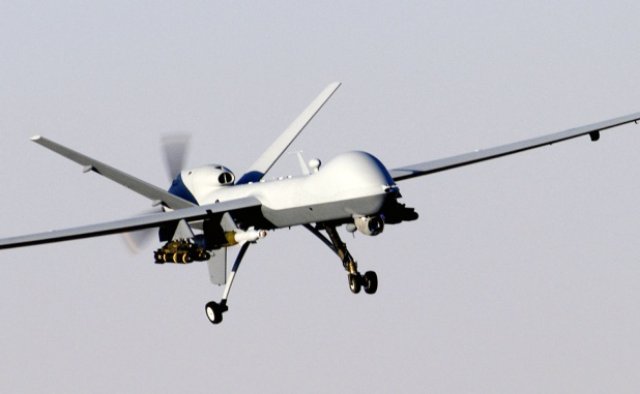Spain plans to spend €171 million on four unmanned aircraft and the infrastructure to support them in order to boost its military surveillance capability.
From next year onward, the Spanish military will count on drones that are able to fly for periods of more than 24 hours, above an altitude of 10,000 meters. Spain’s Defence Ministry has included a €25 million item in the 2016 budget, for the “acquisition of the RPAS unmanned air system, for joint use by the armed forces.” According to the investment plan that accompanies the budget, the program will cost a total of €171 million between 2016 and 2020.
The inclusion of this item in the budget is the definitive boost to the launch of RPAS (Remotely Unmanned Aerial System), after months of uncertainty about the lack of resources. The aim is to acquire four aircraft, two ground control stations (one fixed and one mobile) and associated equipment.
The Ministry of Defence has selected two proposals: the MQ-9 Reaper, the US firm General Atomics, allied with the Spanish Sener;Heron TP and Israel Aerospace Industries (IAI), with Indra as a national partner.
Although the system will be the responsibility of the General Staff of Defence, being a joint program of the three armies, the Air Force prefers the Predator B Reaper, also known as the model is acquired by Britain, France, Italy and the Netherlands, which facilitates both the training of pilots and the possibility of sharing procedures or operations act together.
The Spanish Army already has mini drones, such as over 20 Raven, less than 15 kilos and 50 km of autonomy, which has been used in Afghanistan. This was also the scene where they premiered six Searcher MK III, tactical drones up to 200 km of autonomy, as well as the newly purchased ScanEagle Navy and embarked on ships fighting piracy in the Indian Ocean.
However, Spain has no operational or strategic drones, flying even above commercial airways, weighing several tons off and landing ramp as conventional aircraft.
These models can be equipped with bombs and missiles, and have been widely used by US. UU. in the war against jihadism, but Defence ensures that only plans to arm them as sensors and surveillance radars.Although these devices are called UAVs (unmanned aerial vehicles) sometimes RPAS the name is more appropriate because they are manned yes, but at a distance.
Indeed, the training of crews will be one of the first phases of the program, so it is not expected that the planes are operational by 2017. It will try, in any case, a purchase program, with very little return for Spanish companies, hence the cost included in the defence budget and not in the industry, only finance those alleged weapons programs with a research and development component. In 2016, there will be five weapons programs that fund Industry (the submarine S-80, NH-90 helicopter. Maritime Action Ships, the frigate F-110 and 8×8 vehicles), for a total amount of 468.1 million, almost as much as the investment chapter of Defence (493.6 million).
The RPAS is actually a transition program until a European strategic drone, around 2025. The Spanish Ministry of Defence has already shown interest in joining those of Germany, France and Italy, which last May 18 decided in Brussels allocate 60 million euros to study the feasibility of the project.
Source: El Pais (Google translation)

